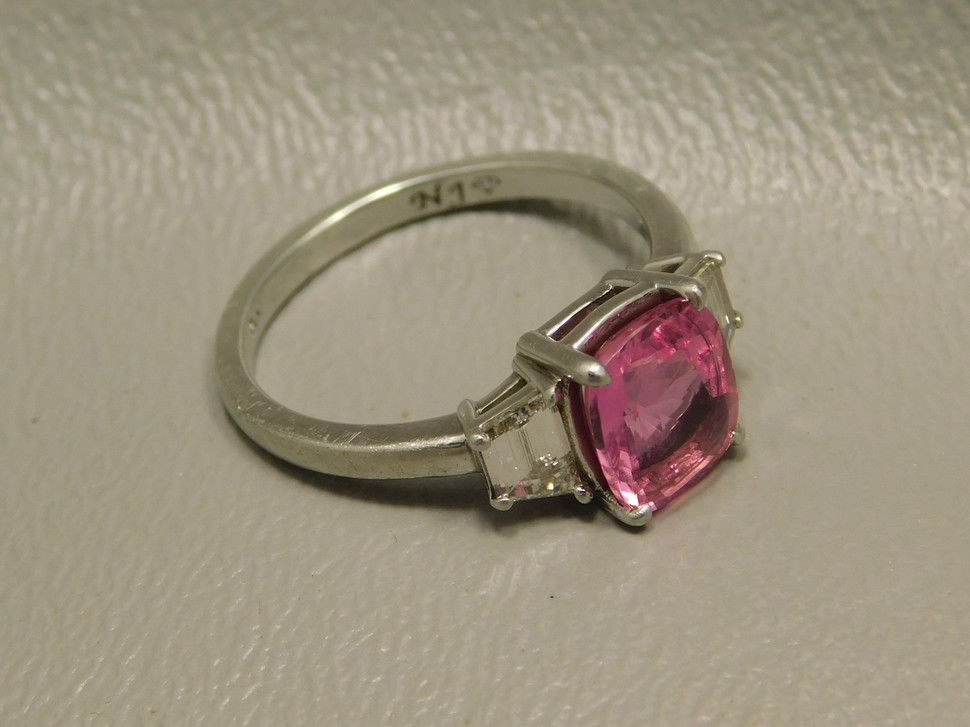Guide to Metal Used in Designer Jewelry Making, Part 3 -Platinum
Platinum is actually one of a group of six associated metals found together in nature that have a similar appearance and properties.
The History of Platinum:
In addition to gold and silver, platinum and to some extend rhodium and palladium (explained below) are important to jewelers. The other metals are used more in dentistry and electronics. Platinum is purer, stronger and denser than gold and it is considered the higher end of precious metals. Of course it is also the most expensive.
There are indications that in the 7 th century the Egyptians were aware of platinum. An alloy of the platinum metals was used to decorate the Casket of Thebes, an Egyptian tomb that dates back to about 700 BC. However it appears platinum was not to have been used for jewelry until the Spanish discovered it in South America in 1550. This is probably because platinum has an extremely high melting point and would have been hard for the ancient people to work with. The Spanish called this new metal platina for its resemblance to silver, which they call plata. During that time, the exporting of platinum was forbidden for fear by the Spanish government of it being used to adulterate the much more valuable at the time gold. Finally in 1741 samples were brought back to England, where it created great excitement.
In 1819 it was discovered in the Ural Mountains of Russia, and small amounts were found elsewhere such as Burma, Japan, Australia, and Spain. But it wasn’t until the 1920’s when it was discovered in Ontario that platinum became widely known and used.
Platinum is much rarer than gold or silver and is only found in quantity in a few places: Russia’s Ural Mountains, South Africa’s Merensky Reef (the largest platinum deposit), and a few small mines in the U.S. and Canada.
Platinum as Currency:
The first and only case when platinum coins were used as a regular national currency was in Russia, where coins were circulated between 1828 and 1845. As a form of currency, these coins proved to be impractical. Platinum resembles silver and other less expensive metals, and, unlike the more malleable silver and gold, it is very difficult to work. Several commemorative coin sets have been issued starting from 1978, including some in the U.S. from 2009 to 2014 and they are popular among coin collectors.
Digging for Platinum:
Platinum is always found with the associated metals. Only in South Africa and a limited number of other ore bodies, does platinum and its associated metals occur in sufficient quantities to make it economical to exclusively extract them. In Russia and Canada the metals are extracted as by-products of nickel and copper. Extracting platinum from ore is both expensive and labor intensive.
Platinum use in Jewelry:
Platinum can be drawn or rolled as thin as a thread or sheet of paper. Platinum may also be formed to any shape more easily than gold. Texture can help to define a piece: a matte finish, satin finish or brushed finish. The density of platinum makes it polish much more slowly than gold. But Platinum does hold its polish, even when heated. This allows the jeweler to pre-polish platinum parts before assembly and they should definitely be polished before connecting to gold. Platinum’s very high melting point allows for assembly of very delicate platinum parts against extremely heavy gold forms.
The Purity of Platinum:
Platinum is similar in color to highly polished silver or white gold. It is softened with a small percentage of silver or copper and hardened with iridium. Platinum does not tarnish. If you have a nickel allergy, platinum is better than white gold as white gold is often alloyed with nickel.
Palladium, like silver, is actually as units of 1000 parts. The most common platinum purities used are:
95% pure platinum or 950
90% pure platinum or 900
85% pure platinum or 850 (under 90% is marketed as a platinum alloy)
Associated Metals to Platinum Used in Jewelry:
Palladium is a popular metal used for setting diamonds, because of its brilliant white color and its excellent reflection of light. Platinum’s drawback is it is heavy or has a high specific gravity. It weighs almost twice as much as 14K gold. Palladium is lighter and similar to gold. Palladium is silvery white and more fusible than platinum. It is often used in the prong mounts for diamonds and valuable gemstones.
Rhodium is also used in jewelry. It is much harder and more resistant to corrosion. It also is whiter and has higher reflectivity than platinum. Rhodium is the most expensive of precious metals. Though not usually used to make jewelry because it is expensive and it is more brittle, it finds its use in plating of silver, platinum, palladium and white gold settings. The whiteness, brilliance, and hardness of rhodium plated not only improves the appearance, but ensures greater durability of the jewelry. Eventually Rhodium plating does wear off though and it will need to be redone.
See previous months blogs:
Metal Used in Jewelry Making, Part 2 - Silver
Metal Used in Jewelry Making, Part 1 - Gold
Coming next month-Metal Used in Jewelry, Part 4 -Base Metals
 US Dollar
US Dollar
 Australian Dollar
Australian Dollar
 Euro
Euro
 Canadian Dollar
Canadian Dollar
 British Pound Sterling
British Pound Sterling

